In the realm of hairstyling, the intricate art of braiding has transcended generations, cultures, and trends, maintaining its allure and timelessness.
As we embark on a journey through the tapestry of hair fashion, a captivating question arises: Is thick hair a blessing when it comes to braids?
The world of haircare is a canvas of diversity, with each hair type possessing its own unique charm and challenges. In this exploration, we delve deep into the realm of thick hair, uncovering the secrets it holds when woven into the intricate tapestries of braided styles.
Join us as we unravel the complexities, celebrate the artistry, and discover the myriad ways in which the magnificence of thick hair weaves an unforgettable narrative within the realm of braids.
What is Thick Hair?
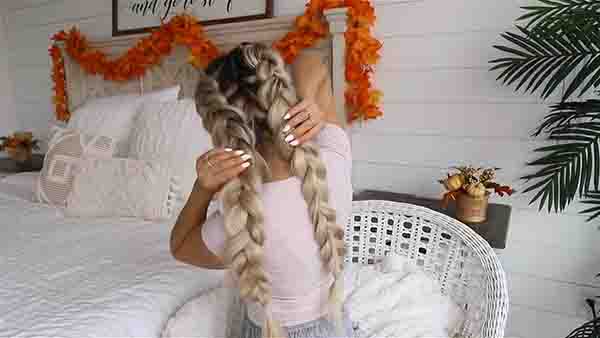
“Thick hair” refers to the high density of hair strands on your head. It’s like having a forest of hair follicles.
You’ll recognize it by the full volume and heavy locks that may take forever to dry or feel too much for a regular hair tie to handle. But, it’s not just about quantity – thick hair has a habit of retaining more oil that can lead to buildup, making it hard to manage sometimes. Just remember, it’s a blend of blessing and challenging to work with.
How to Tell if Your Hair is Thick or Not
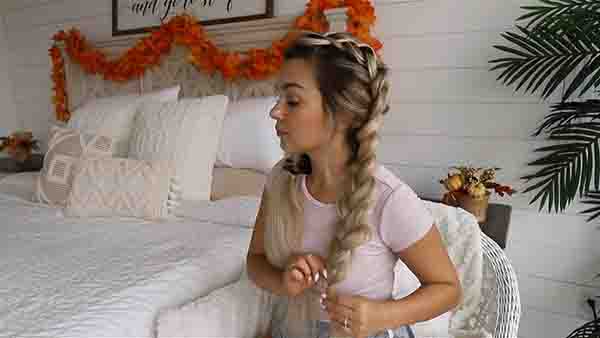
1. Take a look at your hair
Knowing your hair type, especially the thickness, is crucial to effectively manage and style your hair. You can easily determine the level of thickness with a bit of visual inspection and touch.
- Start by observing a single strand of your hair. If it’s clearly visible and feels thick when you roll it between your fingers, you’ve got thick hair.
- Consider your overall hair volume. Thick hair usually provides a fuller look even when straight.
- Check your ponytail. A thicker band or more loops around the hair indicates thicker hair.
- Notice hair fallout. A small amount of fallen hair looks significant if hair strands are thick.
- Lastly, remember, thick hair tends to take longer to dry due to higher density.
2. Feel your hair
Determining hair thickness by feel provides a quick and easy measure of your hair’s volume. This hands-on approach allows for an intuitive understanding of your hair’s character.
- Start by gathering a loose, unbraided strand of hair between your fingers.
- Take note of how the strand feels; is it thin and barely noticeable, or does it feel more substantial?
- For a more accurate measure, roll the strand between your thumb and index finger.
Remember, thick hair may not necessarily mean dense hair, as density refers to the number of hairs on your scalp. With practice, you’ll become more skilled at discerning thick from thin hair.
3. Compare your hair to other styles
Comparing your hair thickness with other styles can be tricky. Here’s a simple guide:
- Start by observing other hairstyles. Note that pictures of amazingly thick braids are often filled with hair extensions.
- Look at your hair. Is it dense or do strands seem sparse?
- Don’t compare yourself to hair models with extensions. Remember, everyone’s hair texture and hold are different.
- Yield to expert tips. For instance, try creating the best possible braids with your specific hair, instead of trying to imitate others.
By following these steps, you’ll be better equipped to understand your hair thickness and how it stands out from the crowd.
4. Check how tightly your braids hold
- Begin by understanding that the tightness of your braids is a useful indicator of your hair’s thickness.
- Not too tight, yet secure; that’s your ideal braid tension. Pain while moving your head or lifting the braids means they’re overly tight.
- Having trouble distinguishing between groups? Use small hair ties at the ends for identification.
- Remember that gently pulling on each strand while braiding ensures overall tightness.
- Keep practicing, first on a friend if necessary. Braiding is all about mastering the basic movements.
- Finally, consult a stylist if you’re finding your braids look old fast. Expert touch-ups can make all the difference.
5. Consider how thick your hair looks when it is down
Determining if you have thick hair involves many observational tips, bringing your intimate knowledge of your hair into play. Here’s a quick guide for you to assess your hair thickness.
- Check your strands: Examine a single strand of your hair. Thick hair strands are larger in size, as mentioned in a study from NCBI.
- Check the weight: Thick hair is heavy. If your hair feels relatively heavy when it’s down, it might be thick.
- Check the volume: Thick hair usually has a high volume even when straightened. Does your hair occupy a lot of space even when it’s down? If yes, you might have thick hair.
- Check your haircuts: If you find immediate relief in the weight of your hair after a haircut, it’s a sign of thick hair.
Remember, the precise thickness of your hair is best evaluated by a professional stylist.
6. Think about how much product you need for your hairstyle
- The amount of product you use for a hairstyle can be an indicator of your hair thickness.
- For thicker hair, you might need to use more products like hair elastics, bobby pins, and nourishing oils to keep the hairstyle in place.
- For thinner hair, the product usage may be less; a light spray gel or a few drops of shine serum could be sufficient.
- As an example, creating a half-up hairstyle in thick hair might require more hair extensions or barrettes. In contrast, thin hair may only need a couple of bobby pins and a spritz of hairspray.
- So, by noticing how much product you frequently use, you can gauge your hair thickness.
- However, consult a professional for a detailed evaluation.
7. Consider how many layers your hair has
- Start by running your fingers through your hair. If it feels dense and difficult to pass through, you likely have thick hair.
- Next, gather a handful of hair. Thick hair typically feels bulky and heavy in your hand.
- Look at the number of layers you have. Thick hair usually requires several layers to control its volume and weight.
- Examine those layers. In thick hair, the individual strands are thicker and the density is high.
- An example: if you have short layers on top and longer layers beneath, it’s a sign your hair might be thick and you’re trying to create an illusion of movement and lightness.
Remember, these are general indications, consult a professional for an accurate assessment.
8. Try a braid style that suits your hair
Choosing a braid style that matches your hair thickness can be a game changer – it’s easier to manage, looks great, and can even seem puffy! Here are quick ways to spot styles that compliment your hair density:
- If your hair is thick, try mini braids twisted into a large, loose plait. Jumbo braids and braided buns are also great options.
- For thin hair, a woven fishtail braid can create the illusion of volume.
- Long hair suits jumbo braids well, but braided buns or ponies look chic on both long and short locks.
- Half-updos with fishtail or messy side plaits work beautifully for straight hair.
Remember, adding fun elements like an overhand knot, colored braids, or a shaved side can further uplift your look!
9. Test out the different braiding techniques that work for you
Thick hair bends well to a myriad of braiding techniques.
a. Large, Single Braids
Your thicker hair makes this style lusciously full. Start with separate small plaits, then merge them into one big braid. This can give you a sporty yet voguish look.
b. Braided Ponytail
Braid types like Fulani, Ghana, or Box can easily be put into a high or low ponytail. This simple change offers a fresh take on the classics.
c. Multi-sized French Braids
Your thick locks can play with differing braid sizes for a fun spin on French braiding.
Remember, though, to not allow your stylist to braid your hair too tightly. You don’t want to sacrifice comfort for style.
10. Ask for help from a professional
- It is crucial to seek expert help to accurately determine your hair thickness. Start by finding a professional hair stylist with experience in assessing hair type and quality.
- Check online or ask friends for recommendations and ensure they specialize in advanced hair techniques.
- When interacting with the stylist, ask about the characteristics of thick and thin hair, and how your hair compares.
- Expect a detailed consultation where the stylist examines your hair strands and provides expert feedback on your hair’s thickness and health.
- This expert opinion can influence hair care routines and styles, improving your overall hair health. Remember, the more informed you are, the better hair decisions you can make.
What hair type is good for braids
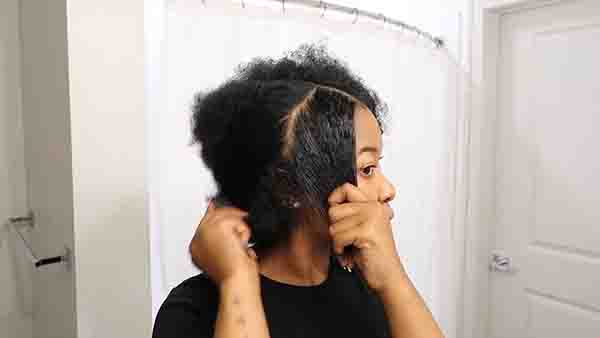
Hey there! Did you know the natural texture of your hair plays a huge role in determining how well it can hold onto braids? For instance:
- If your hair is very fine, it’ll be more suitable for smaller braids.
- Thick hair works great with larger, thicker braids.
- Textured hair, such as coarse or kinky, wins in the braids game because it’s easier to style and holds braids better than straight, smooth hair.
- Thick, textured hair could be a great candidate for smaller braids that are easy to style and maintain.
Remember, always opt for a professional hairstylist to ensure your braids are just as good as your normal hairstyle.
Revamping Protective Hairstyles: Breaking Away from the Routine
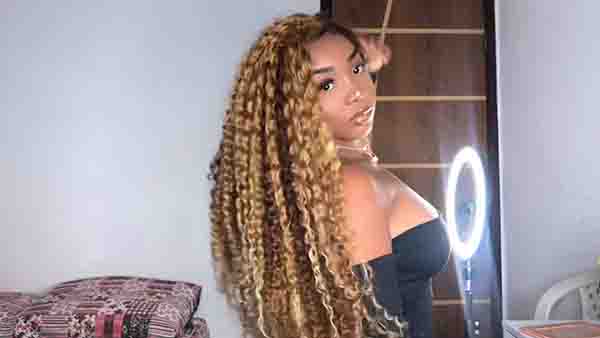
Shaking up your protective hairstyles can be an exciting way to express yourself while keeping your strands safe. It’s all about creativity, flexibility, and understanding how to work with your type of hair.
- Seek inspiration from celebrities or hair experts – they’re often the trendsetters for new styles
- Consider variations of classic styles like box braids (as we see Box braids sporting by celebs such as the Knowles sisters to Zoë Kravitz and Tia Mowry)
- Get creative with lengths, sizes, and colors to add a fresh take on traditional looks
- Don’t forget maintenance: remember, variations shouldn’t compromise the protectiveness of the style
- Consult your hairstylist or do your research to ensure new styles won’t harm your hair growth
Remember, change can be good, even for our hair.
The Art of Large Braids: Mastering Thickness and Width
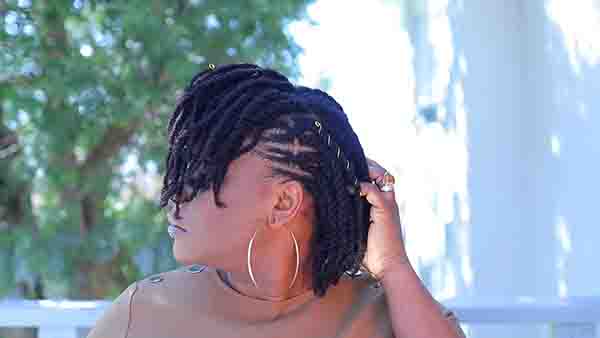
Hair thickness and braid size can dramatically influence your overall style.
Here are several insights to grasp the art of creating larger, thicker braids:
- Consider the Stitch Braid technique. It requires alternating between thick and thin braids, resulting in an appealing pattern.
- Optimize the Pancaking technique, a trick that makes your braids appear larger and fuller.
- Start from the bottom, gradually moving towards the top.
- Pull only on the outside of the strand, avoiding the center.
- Gradually work towards the inner strands for a uniformly fuller look.
- Experiment with six-strand braids to achieve that jumbo, stylish look.
Expert Tip: Braiding is great for hair preservation, especially with thinner strands. But, remember to avoid excessive tension and weight. It assures your braids are light and stress-free.
What braids look thick
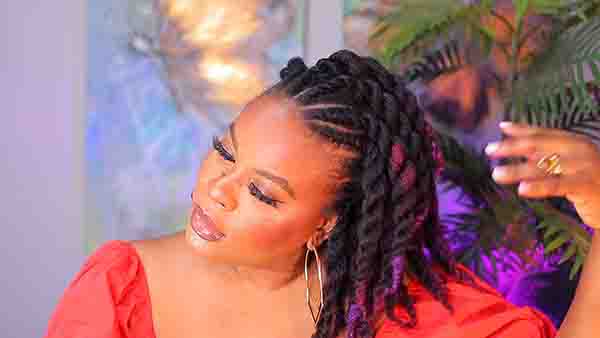
Want to give your hair an entrancing, thick-braided look? Here’s what you might consider:
- Try Dutch braids. They are ideal for thick hair and can be worked up into a variety of styles.
- Even if you have thin or fine hair, the braid pancaking technique can do wonders. Loosen and flatten your braid to create an appearance of fullness.
- If your hair is coarse or kinky, small braids could be your best friend.
- A half-up crown braid on super-thick hair is a guaranteed dreamy look. Even a few pinned twists can achieve this updo.
- Box Braids: Offering versatility and minimal tension on your hair, this is ideal for busy individuals.
- Two-Strand Twists: Easy to achieve at home, it provides a great blend of style and protection.
- Bantu Knots: A fun, edgy style that can be worn as a standalone look or for curl definition.
- Cornrows: Known for their low maintenance, they allow your scalp to breathe.
- Twist Out: Great for showing off your hair’s volume and texture, and easy to restyle through the week.
So ahead, find your favourite look and turn those heads!
Braiding Hacks for Thicker Hair: Insights from Experience
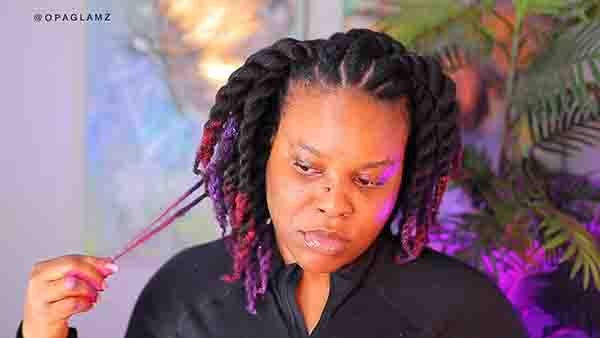
Knowing how to braid thicker hair is key to achieving a stylish yet effortless look. Here are some tried-and-tested tips to help you master the art of braiding thick locks.
First, you don’t need hair extensions. Use your own volume to add a luxurious touch. To cheat some extra volume, fan out the pieces of your braid, giving an impression of a thicker braid.
- Start pancaking your braid. This involves pulling and fanning out the braid from bottom to top to make it look bigger.
- Ensure you only pull the outside of the strand, not the entire strand.
- To achieve fullness, start from the outside and work towards the inside of the strand.
- Break your thick hair into smaller braids. Layer them on top of each other for less bulk and a softer look.
Bonus Tip: Tuck away any stray fly away hairs with bobby pins. Remember, let your strands speak their volume and texture. Happy braiding!
Do thicker or thinner braids last longer?
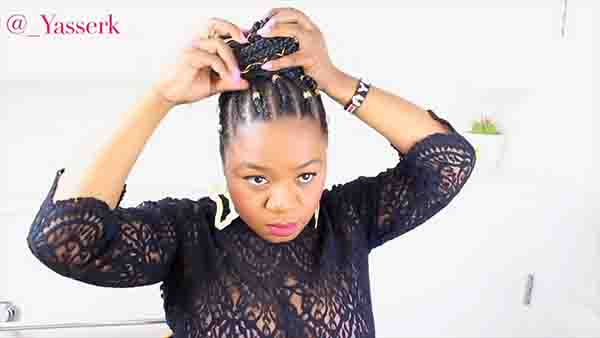
When choosing between thicker and thinner braids, longevity depends largely on your maintenance.
- Thicker braids might offer a bold look, yet they can frizz faster reducing their wear time.
- Advantage: Spectacular bold look
- Disadvantage: Tend to frizz faster, therefore, lasting for shorter duration.
On the other hand, smaller, tighter braids promise a protracted lifespan.
- Despite the time invested in installing them, they remain neater for a longer period, translating to better endurance.
- Advantage: Longer lifespan
- Disadvantage: Require more time to install
Remember, the overall lifespan of your braids also falls back to your personal hair care routine.
Secrets to Thicker-Looking Braids: Unveiling Easy Tricks
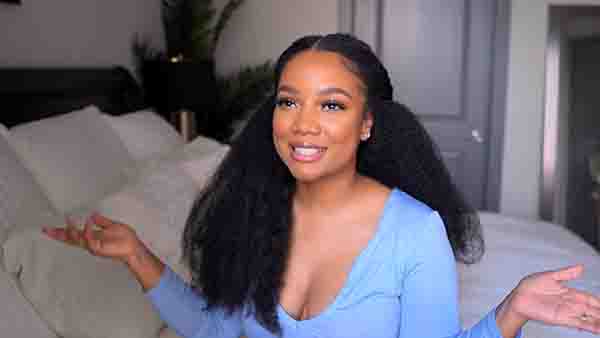
Want to flaunt bigger and bushier braids? Achieving that thicker look for your braids is easier than you think! Let’s dive into some insider secrets:
- Firstly, give your braid a ‘pancake’ treatment. Pancaking involves pulling and fanning out the braid, starting from the bottom, up to the top. The catch? Only pull on the outside of the strand, gradually working way inward. This instantly boosts fullness.
- Another trick is to end your braid a few inches before the hair ends. Then start ‘pancaking’ before you tie it off.
- For an extra flare, try a little volumizing powder on big days. It keeps your pancakes in place and amps up the volume.
- Remember, not all braids are created equal. Dutch and pull-through braids naturally look fuller than other types.
Embrace these secrets and say hello to the world of thick braids.
Braid Volume Enhancement: Learning from Insider Tips
Enhancing braid volume is quite simply the act of making your braids look thicker and fuller, even if you have thin or fine hair. This magic trick can be achieved with a few cunning tips that I’ve gathered just for you:
- Start by selecting a portion of your hair, preferably from the top of your head, and split it into three strands.
- Go ahead, conjure up a Dutch braid by crossing the right strand. Remember, the Dutch braid is your friend here.
- As you progress down the length of the braid, very gently pull at the outside of your plait sections, fanning them out. This is lovingly known as ‘pancaking.’
- Start the pancaking method from the bottom and slowly work your way up to the top for the best results.
- If you’d like an even fuller look, you can tease out the strands from the outside towards the inside.
With these tips, you’ll be turning heads with your fuller, thicker braids.
The Role of Volumizing Powder in Hair Styling: Achieving Editorial-Like Braids
Volumizing powder is your ticket to achieving braids that look like they’ve walked straight off the cover of a fashion magazine, even if you don’t have incredibly thick hair. It’s a product designed to give your hair a boost in thickness and hold.
Top features:
- Adds volume to braids
- Increases the braid’s hold
- A little goes a long way
Pros:
- Enhances braids by adding a full, textured look
- Makes braiding easier as hair becomes more manageable
- Allows braids to sustain their look for longer
- Can be used sparingly, extending product lifespan
- Offers an economical alternative to hair extensions for adding volume
Cons:
- Might add an unnatural feel to hair because of the texture
- Can require extra shampooing to remove
- May not suit all hair types
- Specific application technique required for the best result
- The product pricing may seem a bit high initially, but taking into consideration the benefits and longevity, it turns into an investment.
Volumizing Powder Application Techniques: Less is More
Less is more when it comes to using volumizing powder for adding thickness to your braids. It’s a firm believer in the ‘little goes a long way’ mantra.
- Start by sectioning your dry hair for braiding.
- Lightly dust the volumizing powder, focusing especially on the roots and middle of your hair sections. Remember, moderation is key here.
- Massage it into your roots to help it bond with your hair.
- Now, begin braiding your hair while ensuring you’ve left few inches of hair at the end.
- Upon completed braid, delicately pancake it by pulling at the outer edges for added fullness.
- Finally, sprinkle just a small amount of powder at the braids’ surface for a thicker illusion (optional).
With this example, even thin braids can look out-of-control thick, creating an illusion of boosted volume. Remember, your braid’s appearance can drastically change with just a dollop of volumizing powder, so apply judiciously.
Effective Products for Hair Volume: Going Beyond the Basics
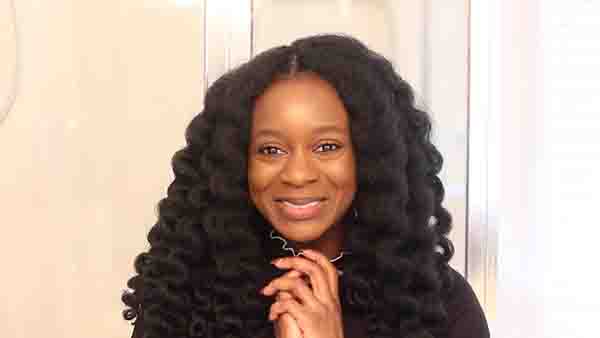
Seeking a change from basic hair products to achieve fuller hair? Say hello to products like Flawless by Gabrielle Union masques and Everpure Sulfate Free Shampoo that are game-changers for hair volume.
Features:
- Deep conditioning masques for hydration
- Sulfate-free shampoo for gentle cleansing
- Incorporates essential oils
- Promote hair strength
Pros:
- Enhance hair thickness
- Remove oil buildup
- Prevent hair dullness
- Retain hair length
- Create volume
Cons:
- Might take time to show results
- Overuse can lead to hair greasiness
- High-end pricing
- Availability issues
- Not suitable for all hair types
Pricing: These products fall into the high-end category. For desired results, investing in quality hair products is often worthwhile.
Braiding Techniques: Mastering the Chicest Looks
Mastering various braiding techniques can help you unleash the full potential of your thick hair, allowing you to rock intricate and chic looks. To help you navigate this realm of hairstyles, here are some braiding techniques tailored for voluminous tresses!
- The 3-strand braid: This classic braid is as simple as it gets. Start by dividing your hair into three sections and alternate which section you place in the middle until you’ve reached the end. Secure it with a band, and voila! An easy and stylish everyday look.
- French Braid: Grab a small section of hair from the crown of your head. Divide this into three sections and start braiding while adding more hair every time you cross the sections over. This can be tricky, but practice makes perfect.
- Fishtail Braid: This one’s for when you’re feeling fancy. Similar to the French braid, start at the crown but split hair into two instead of three sections. Take a small piece from one side and cross it over to the other, alternating as you move down the head. An intricate fishtail braid is sure to turn heads.
- 5-Strand Braid: A bit more complicated, this involves dividing hair into five strands. Then, alternately weave sections over and under each other from the outside to the middle. This braid might take some time to master, but the intricate result is definitely worth the effort.
- Boho Braids: A laid back and stylish look, this technique involves making multiple loose and easy braids in your hair. Pair this look with a flowy dress and you’re set for that boho-chic vibe!
Remember, the key to these styles is to keep practicing. Even if you’re a beginner, with patience and persistence, you’ll soon be able to create these looks effortlessly. Now go and show off your chic braided hairstyles to the world.
Why does my hair feel thinner after braids
Your hair might feel thinner after braids due to a condition called traction alopecia, often caused by tight braiding. Here’s how to check hair thickness post-braid:
- Start by gently running your fingers through your hair.
- Feel for any noticeable reduction in thickness, particularly at the roots.
- Be mindful of any smaller bald patches or hair breakage.
Tips to prevent hair thinning due to braids:
- Alert your stylist to not braid your hair too tightly.
- Opt for smaller or medium-sized box braids as they add less tension to your hair.
- Ask for feathered braids as they are lighter and cause less strain.
- Wash your braids with a natural shampoo once a week and keep them moisturized. Don’t keep the braids on for very long to prevent further damage.
FAQ
Yes, thick hair is great for braids as it provides ample volume and durability.
Absolutely, thick hair can be styled into beautiful box braids.
Kanekalon hair is commonly used for knotless braids due to its lightweight and natural look.
Perm rod or flexi rod curls can make your hair curliest after taking out the braids.
Braids can typically last 2 to 6 weeks, depending on the style and care.
Synthetic hair with a smooth texture is less likely to cause itching.
Cornrows work well with various hair types, but coarse or curly hair provides better grip.
Yes, knotless braids can be done on thick hair for a natural look.
Box braids suit various hair types, including curly, wavy, and straight.
Divide the hair into smaller sections and use a firm grip to braid extra thick hair.
Box braids can take 6 to 8 hours or more for thick hair, depending on the size and length.
Understand the maintenance, duration, and potential impact on your hair’s health.
Thin braids can last longer than thicker ones due to reduced tension on the scalp.
Smaller, lighter braids like box braids or knotless braids are less likely to stress your edges.
Yes, knotless braids are gentler on thin hair and reduce tension on the scalp.
Avoid tight braiding, excessive weight, and long-term wear to minimize hair loss.
Low braids cause less tension and are gentler on hair, reducing the risk of damage.
Jumbo box braids or long, straight braids can create a slimming effect on the face.
Consider your face shape, hair texture, and personal style to determine if braids will suit you.
Braids can be adapted to suit most people, but personal preference and hair type play a role.
Yes, improper installation, excessive tension, or neglect can lead to hair breakage in braids.
Bigger braids can be more comfortable and quicker to install, but smaller braids offer more styling versatility.
It’s best to give your hair a break between braiding styles, wearing them for 2-3 months at most.
Yes, knotless braids are a good option for fine hair as they reduce strain on the scalp.
Braids can feel heavy initially, but you’ll likely adjust to the weight within a day or two.
It’s advisable to get a shape up before braiding to ensure neatness and reduce tension on the hairline.
Verdict
The article provides a comprehensive exploration of the relationship between hair thickness and braiding, delving into various aspects of determining hair thickness, choosing braiding styles, enhancing volume, and maintaining the health of braided hair.
It educates readers about the significance of understanding their hair type and how it impacts the suitability and longevity of different braiding techniques.
The article emphasizes that while thick hair can provide a fuller look and offer unique opportunities for styling, it can also come with challenges such as oil buildup and difficulty in managing. The reader is guided through visual and tactile methods to determine hair thickness, encouraged to consider various factors when choosing braiding styles, and provided with tips on enhancing volume using techniques like “pancaking” and volumizing powder.
Additionally, the article highlights the importance of proper maintenance to prevent hair damage and thinning, particularly in cases of excessively tight braids. It also suggests various braiding techniques suitable for different hair types.

